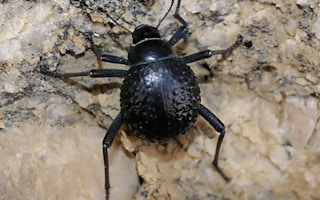For years, people living in high-altitude or coastal arid countries have been collecting drinking water by harvesting fog. More specifically, they’ve mounted pieces of fine netting over top of containers, left the setup overnight, then collected the fog droplets that got caught in the net and rolled down its fibers into the container. While it might sound like a rather insubstantial way of acquiring water, under the right conditions it can yield a surprisingly large amount of liquid. Now, a chemical engineering graduate student from the Massachusetts Institute of Technology (MIT) is looking to improve on the technique.
Shreerang Chhatre was inspired by the Namib Beetle, an insect that collects water droplets on bumps on its back, then drinks them when they roll down to its mouth. His “fog harvesters,” like those created by other scientists, use a mesh panel in place of a net. Even solid materials such as plastic sheeting will work, although they can create wind currents that carry some of the moisture away.
In tests of existing fog harvesters, some have been able to collect one liter (about a quart) of water per meter of mesh, per day.
Chhatre is trying to boost that output by refining the materials that the mesh is made from, attempting to strike a balance between hydrophilic materials that attract water droplets, and hydrophobic materials that then send them on their way down into the collection container. The Namib Beetle employs a similar strategy, with hydrophilic bumps that droplets stick to, and hydrophobic channels that allow those droplets to slide down to its mouth without being absorbed along the way.
Much as improving the amount of water obtainable from fog harvesters is a technical problem, it’s also a social one – most of the potential users likely couldn’t afford such a device. To that end, Shreerang is hoping that people in developed nations might also start using them, simply to offset their consumption of fresh water from traditional sources. The more units that are sold to such First World consumers, the lower the prices could be for Third World recipients, and the more accessible the technology would become.








